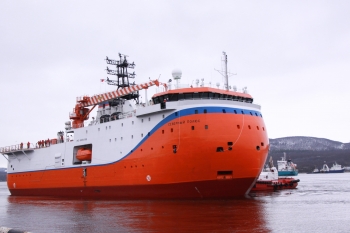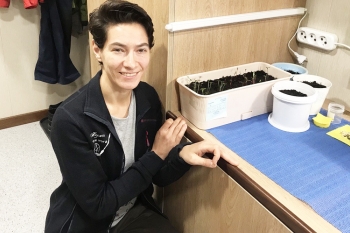May 21 in Murmansk can truly be called the ultimate polar day! This date marks both the beginning of the polar day at our city's latitude and the celebration of Polar Explorer's Day. This professional holiday has been celebrated since 2013 in accordance with the Presidential Decree in recognition of polar explorers' achievements. The date commemorates the start of operations in 1937 by the North Pole-1 drifting research station.
MMBI RAS employs numerous polar scientists who have collectively spent years of research in polar latitudes. Just before Polar Explorer's Day, Olga Zimina, a researcher from the MMBI Zoobenthos Laboratory, returned from a 20-month polar expedition. She spent nearly two years aboard the North Pole ice-resistant self-propelled platform (ISP) as head of biological research for the North Pole-41 expedition (AARI). The platform drifted from the northern New Siberian Islands through the polar region to the Fram Strait between Greenland and Svalbard, covering three thousand nautical miles and collecting unique data about the Arctic's nature.
"We've gathered extremely interesting material that still awaits analysis," Olga Zimina told murmansk.aif.ru. "We studied depths up to four kilometers – the bottom, water column, and ice – covering the entire ecosystem. There's very little information about what happens under the ice. Everyone talks about melting ice and changes, but we don't actually know if that's truly the case."
Back in 2022 at the expedition's start, Olga Zimina admitted to TASS that she had long dreamed of such an expedition. Working in such unexplored and inaccessible areas provides invaluable experience and data that simply doesn't exist elsewhere in the world. For Arctic research, drifting stations are uniquely suited. "Nobody even tries working from icebreakers. First, it's expensive. Second, it's very difficult – they're not equipped for such work. Their job is breaking ice. The drifting station format is exactly what we need – it provides the best conditions and ideal speed," she explained. Contrary to impressions of the Arctic as a lifeless icy desert, it's actually quite habitable, especially the sub-ice environment where various crustaceans and fish thrive at subzero temperatures. Most Arctic fauna specimens will be transferred to mainland Russia for further study to help us better understand this region's natural processes.
Watch the expedition's return coverage on GTRK "Murman". We also recommend reading the International Women's Day article about female polar researchers' lives aboard the ISP on the "Rossiyskaya Gazeta" website.


Photos by Rossiyskaya Gazeta








